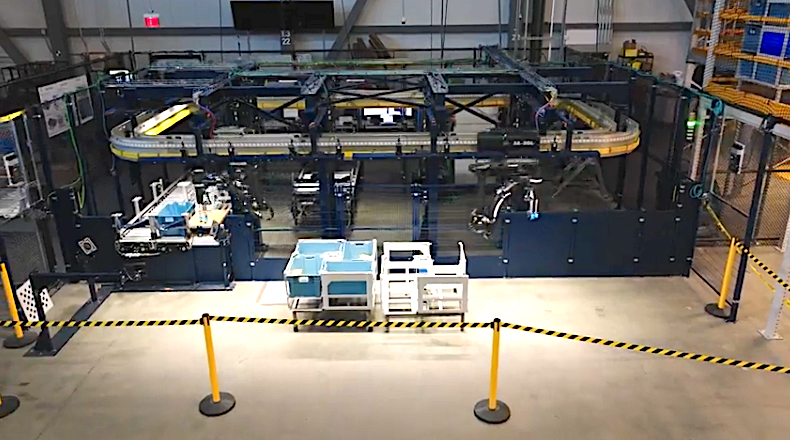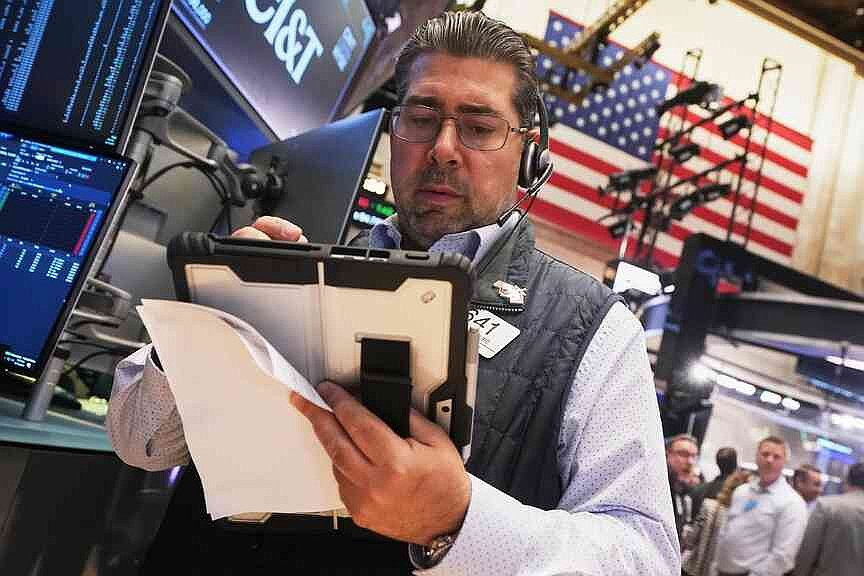Copyright SiliconANGLE News

Amazon.com Inc. aims to transform its retail and logistics business with the introduction of more sophisticated robots and artificial intelligence operations tools for warehouses, as well as “smart delivery glasses” for the contractors who deliver its packages to customer’s doors. At its annual Delivering the Future event today in the Bay Area, Amazon lifted the lid off Blue Jay, a new robotics system with multiple arms that effectively combines three systems into one, and Project Eluna, which helps warehouse managers make more intelligent decisions on the spot. Meanwhile, the smart delivery glasses are still under development, and will eventually help Amazon delivery associates to navigate more effectively and capture proof of delivery without having to grab their smartphones constantly. The company said that Blue Jay is the culmination of years of advances it has made in Robotics, building on earlier systems such as Vulcan and DeepFleet. It’s the latest example of what Amazon calls “physical AI,” which refers to AI systems that can interact with their physical environment to support humans in their work. Blue Jay is an advanced robotic sorting system that’s designed to be installed at the company’s logistics facilities. With its multiple arms, it’s more like an automated production line that can pick, sort and stow hundreds of different items to try and organize packages more efficiently. It consolidates what used to be three separate robotic systems into one much more capable station that can process thousands of items per day at faster speeds than before. Amazon said it used AI systems and “digital twins” to accelerate the design of Blue Jay, which meant it was able to go from concept to production in just over a year. That’s incredibly quick, considering that earlier systems such as Cardinal, Robin and Sparrow took about three years to develop. The company said AI enabled it to condense years of trial-and-error were condensed into months of development. the company said. Its engineers could iterate on dozens of prototypes for Blue Jay with the use of digital twins. Blue Jay is already being tested at one of Amazon’s biggest logistics facilities in South Carolina, and it has the capability to organize about 75% of the various items it stores at that site. Over time, the system will be introduced in many more facilities, including thousands of Sub-Same Day Sites to help the company deliver parcels to customers faster. Amazon is a pioneer of physical AI. Earlier this year it announced a robot called Vulcan that was the first in the world to possess a sense of touch. It was a key development that aids both operations and safety. For instance, if Vulcan picks up a box and notices that it’s starting to crumple at the edges, it will understand that it’s gripping it too tightly and reduce the amount of force it’s using. It also uses touch to know when it accidentally bumps into a human worker, and will immediately pause when this happens. Agentic operations assistant The Blue Jay system will be aided by Project Eluna, which is an agentic AI platform that’s designed to act like an assistant for operations managers. The company explained that its human workers face a never-ending workload, having to monitor dozens of dashboards that overlook their logistics operations and respond to any issues, such as technology breakdowns and bottlenecks that require a reallocation of resources. Project Eluna will help to reduce that cognitive load, helping to oversee operations and recommend actions to operators in real time. It’ll be able to anticipate bottlenecks before they become a problem and work out how to deal with them, so that the logistics operation runs as smoothly as possible. Operators will be able to converse with Eluna too, asking questions such as “Where should we shift people to avoid a bottleneck?” and receive immediate recommendations. “Our latest innovations are great examples of how we’re using AI and robotics to create an even better experience for our employees and customers,” said Amazon Robotics Chief Technologist Tye Brady. “The goal is to make technology the most practical, the most powerful tool it can be, so that work becomes safer, smarter, and more rewarding.” AI specs for delivery drivers The smart delivery glasses don’t appear to have an official name just yet, but they’re already being used in the real world by hundreds of delivery drivers to assist in their development with feedback. Earlier this year, Amazon revealed that it’s working on an advanced geospatial mapping technology that provides more granular detail about things such as building shapes and obstacles on pavements, and we now know why. The technology is being integrated into the smart glasses, which feature an embedded display that allows for hands-free operation, so drivers no longer have to keep fiddling with their smartphones. The company said they’ll provide navigation instructions while the wearer is driving, and then once they’ve parked up, it’ll continue to tell them where to go if they need to walk to the customer’s house, with turn-by-turn walking directions. That will be especially useful in places such as large apartment complexes, the company said. In addition, the glasses will be able to scan packages and take photos of each item once they reach the customer’s door as proof of delivery. Amazon said its drivers were a massive help, testing early versions of the smart glasses and providing feedback on their functionality and comfort, so it could tinker with the design and get it just right. Based on the driver’s inputs, it decided to use a swappable battery to ensure the glasses can be used by those on longer shifts. It also added support for prescription lenses, so that those who need to wear regular spectacles can also use them. A delivery contractor at Maddox Logistics Corp. in Omaha identified at Kaleb M. said he felt safer while using the smart spectacles, because they provide all of the information he needs in his field of view. “Instead of having to look down at a phone, you can keep your eyes forward and look past the display,” he said. “You’re always focused on what’s ahead.” Photos: Amazon



